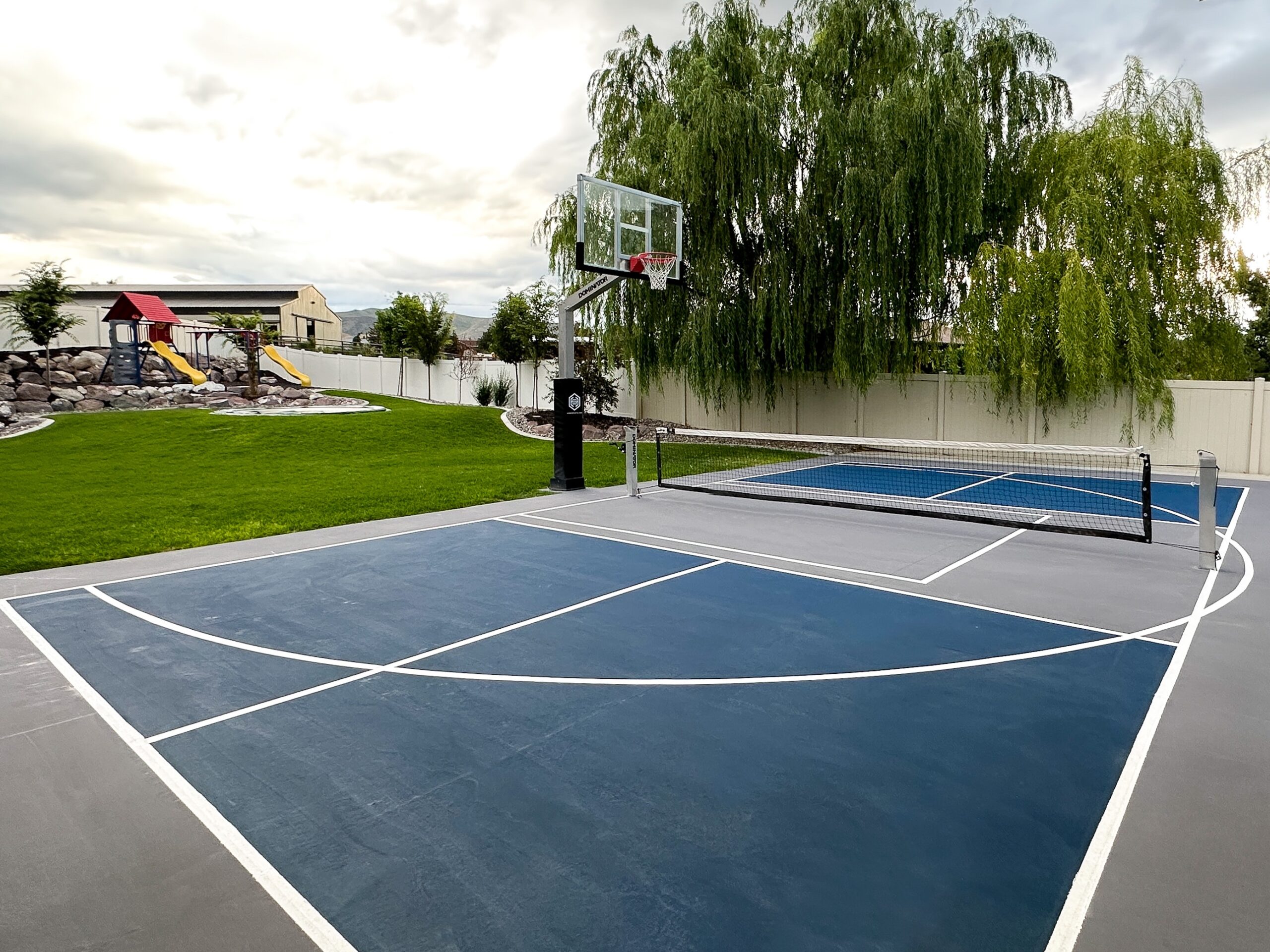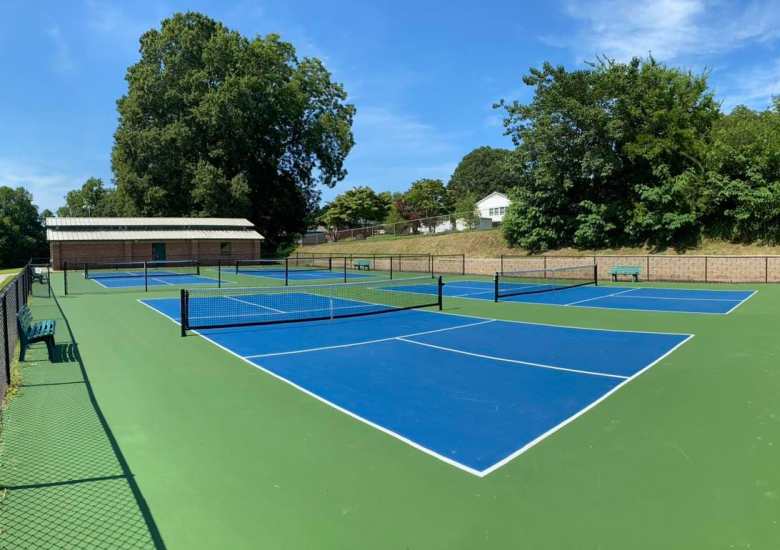Technologies in Pickleball Court Construction: Trends You Need To Know
Technologies in Pickleball Court Construction: Trends You Need To Know
Blog Article
From Layout to End Up: Your Guide to Building a Pickleball Court
Creating a pickleball court is a diverse project that requires a strategic strategy, beginning with the choice of an ideal location that stabilizes access and interaction. The design stage is crucial, as it includes adhering to main court measurements while thinking about external variables such as sunshine and sound. Product choice also plays a substantial duty in guaranteeing the court's sturdiness and performance. As we discover the necessary steps in this procedure, you'll discover what it requires to transform a concept right into a fully useful facility that meets the requirements of its players.
Selecting the Right Area
When planning to develop a pickleball court, it is necessary to constantly take into consideration the place, as it plays an essential function in the overall performance and satisfaction of the facility. Choosing a website that is conveniently available boosts participation, making sure that gamers can conveniently reach the court without considerable traveling obstacles (Pickleball court construction). Additionally, distance to domestic locations, parks, or recreation center can foster a sense of area involvement and boost use
The surface is an additional vital aspect; a level, well-drained location minimizes maintenance problems and supplies a risk-free having fun surface area. Staying clear of locations prone to flooding or extreme wind will likewise improve the having fun experience. Consider the sun's course throughout the day; placing the court to decrease glow can considerably enhance visibility for gamers.
Noise levels should be analyzed, as locating the court near high-traffic roadways or loud settings might detract from the playing experience. Last but not least, zoning permits and regulations have to be assessed to make certain conformity with regional laws. By very carefully assessing these aspects, one can protect a place that not only fulfills functional needs yet likewise enhances the total pleasure of pickleball.

Designing Your Court Design
After choosing a proper place for your pickleball court, the following action includes creating an efficient court design that makes best use of functionality and player experience. Begin by sticking to the main measurements established forth by the United States Pickleball Organization, which dictate a court size of 20 feet broad by 44 feet long for both singles and doubles play.

Next, position the court to reduce sunshine glow, preferably straightening it north-south, which helps maintain exposure throughout games. Focus on access, ensuring pathways for players, spectators, and maintenance devices.
If your style consists of numerous courts, room them properly to minimize sound and disturbance throughout play, while additionally permitting viewer locations. Incorporate designated areas for seats, storage space, and services such as hydration terminals. Thoughtful preparation of these components will certainly produce a welcoming and functional setting for players of all skill levels.
Choose Products and Surfaces
Just how can the appropriate selection of surface areas and products improve the gameplay experience on your pickleball court? Picking ideal products and surface areas is vital for ideal performance, security, and longevity of your court. One of the most generally made use of surface areas include asphalt, concrete, and specialized sports floor tiles, each offering unique advantages.
Asphalt offers an affordable option, supplying a smooth surface area that enables for good round bounce and grip. Concrete, while much more pricey, supplies sturdiness and minimal upkeep, making it appropriate for high-traffic areas. For those looking for sophisticated performance, specialized sporting activities tiles are readily available in different colors and appearances, developed especially for pickleball. These ceramic tiles provide excellent grasp and cushioning, lowering the risk of injury.
Additionally, consider the effect of surface area shade and texture on exposure and gameplay. Vibrantly colored surfaces boost ball exposure, while distinctive surface areas can help manage the rate of the round, accommodating diverse having fun styles. Eventually, the option of surfaces and materials need to align with your budget, preferred aesthetics, and the degree of play you wish to fit, ensuring a high quality experience for all gamers.
Construction Steps to Follow
Starting the building and construction of a pickleball court calls for mindful planning and execution to guarantee a high-quality playing surface. Begin by marking the dimensions of the court, which measures 20 feet by 44 feet for doubles play. Excavate the area to a depth of roughly 4 to 6 inches, guaranteeing appropriate drain and a degree structure.
Following, set up a steady base utilizing crushed stone or gravel, compacting it thoroughly to create a solid structure. As look at here soon as the browse around this site base is established, apply a concrete slab, ensuring it goes to the very least 4 inches thick. Smooth the surface area for ideal playability, enabling it to treat for the suggested time, typically around 28 days.

Last Touches and Upkeep
Finishing the building and construction of a pickleball court entails important final touches and continuous upkeep to make sure long life and optimum efficiency. Initially, ensure that the surface is properly cured and totally free of debris. An extensive cleaning removes dust, dust, or any kind of products that can impact gameplay. Furthermore, apply a premium court finishing to enhance grip and secure against wear.
Next, examine the web and articles for proper placement and stress. A well-kept web is vital for fair play, so adjustments might be required after initial usage. Install border lines utilizing durable, weather-resistant paint to keep exposure over time.
Normal maintenance is vital click here now to preserving your court (Pickleball court construction). Set up periodic examinations to inspect for surface area fractures, fading lines, or drainage problems. Prompt repair services will stop minor problems from escalating right into significant problems
Final Thought
In recap, the successful building of a pickleball court requires a systematic method, starting with the option of a suitable place and mindful layout of the court layout. The option of products considerably affects the court's durability and performance, while adherence to well established building and construction actions ensures high quality execution. Ultimately, regular upkeep and the application of top quality finishings are necessary for maintaining the court's problem, thereby offering an ideal having fun experience for all individuals.
Just how can the appropriate choice of materials and surfaces boost the gameplay experience on your pickleball court?Getting started on the building and construction of a pickleball court needs cautious planning and execution to ensure a high-quality having fun surface area.After treating, paint the court lines using top quality, outdoor-grade paint, adhering to the official measurements for pickleball courts.Finishing the building of a pickleball court involves important last touches and recurring maintenance to guarantee longevity and optimum performance.In summary, the effective building of a pickleball court entails an organized strategy, starting with the choice of a suitable area and cautious design of the court format.
Report this page